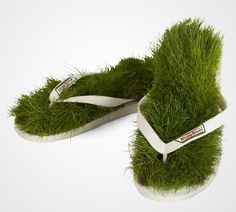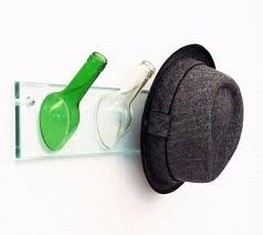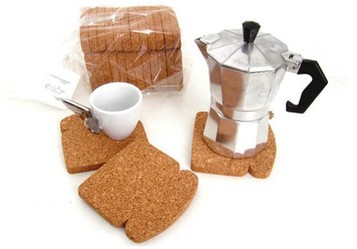2.5
The starting point for many green products is to improve an existing product by redesigning aspects of it to address environmental objectives. The iterative development of these products can be incremental or radical depending on how effectively new technologies can address the environmental objectives. When newer technologies are developed, the product can re-enter the development phase for further improvement.
The purpose of green design is to ensure a sustainable future for all.
The purpose of green design is to ensure a sustainable future for all.

Green design is the development of products to have a reduced environmental impact throughout its life.
Sustainable products provide social and economic benefits while protecting public health, welfare and the environment throughout their life cycle—from the extraction of raw materials to final disposal (cradle to the grave).
There are many examples of this, such as:
•To choose non-toxic, sustainable-produced or recycled materials which don’t need as much energy to process.
•To manufacture and produce products using less energy.
•To produce products that are long lasting and better functioning so there is less replacement and use of products.
•Design products using the concept of being able to recycle it when its use is done.
Sustainable products provide social and economic benefits while protecting public health, welfare and the environment throughout their life cycle—from the extraction of raw materials to final disposal (cradle to the grave).
There are many examples of this, such as:
•To choose non-toxic, sustainable-produced or recycled materials which don’t need as much energy to process.
•To manufacture and produce products using less energy.
•To produce products that are long lasting and better functioning so there is less replacement and use of products.
•Design products using the concept of being able to recycle it when its use is done.

Drivers for green design (consumer pressure and legislation)
Drivers for green design include consumer pressure and legislation, among others. Environmental legislation has encouraged the design of greener products that tackle specific environmental issues, for example, eliminating the use of certain materials or energy efficiency.
In developing the product brief, formulating the product design specification and
choosing the material and manufacturing process, the potential environmental
impact of the product is assessed with the specific objective of reducing this
impact and minimising it over the longer term.
Drivers for green design include consumer pressure and legislation, among others. Environmental legislation has encouraged the design of greener products that tackle specific environmental issues, for example, eliminating the use of certain materials or energy efficiency.
In developing the product brief, formulating the product design specification and
choosing the material and manufacturing process, the potential environmental
impact of the product is assessed with the specific objective of reducing this
impact and minimising it over the longer term.
Consumer pressure
•The public have become aware of environmental issues through media focus on issues such as the destructive effect of chlorofluorocarbons on the ozone layer; acid rain in Northern European forests and the nuclear accident at Chernobyl. Increased public awareness has put pressure on corporations and governments through purchasing power and voting power.
•The consumer will seek out products that are energy efficient which will be cheaper to run this providing savings for the consumer
•The public have become aware of environmental issues through media focus on issues such as the destructive effect of chlorofluorocarbons on the ozone layer; acid rain in Northern European forests and the nuclear accident at Chernobyl. Increased public awareness has put pressure on corporations and governments through purchasing power and voting power.
•The consumer will seek out products that are energy efficient which will be cheaper to run this providing savings for the consumer
Legislation
•Raised awareness of environmental issues is increasing legislation in many countries. This can lead to financial penalties on companies who do not demonstrate environmental responsibility. Many people will not behave responsibly unless forced to do so, therefore, legislation forces the issue.
•Raised awareness of environmental issues is increasing legislation in many countries. This can lead to financial penalties on companies who do not demonstrate environmental responsibility. Many people will not behave responsibly unless forced to do so, therefore, legislation forces the issue.
Are laws and regulations that are based on conservation and sustainability principles, followed by designers and manufacturers when creating green products.
How green legislation encourages incremental rather than radical changes
•for example, legislation relating to the use of catalytic converters for cars (end-of-pipe technology).
•This legislation tackles specific an environmental issue such as car emissions.
•Green legislation is effective as it involves incremental changes (refer to Topic 2.4).
How green legislation encourages incremental rather than radical changes
•for example, legislation relating to the use of catalytic converters for cars (end-of-pipe technology).
•This legislation tackles specific an environmental issue such as car emissions.
•Green legislation is effective as it involves incremental changes (refer to Topic 2.4).
Examples of legislation:
•Green/High-Performance Building Legislation in the States
|
•One problem in relation to the recycling of plastics is knowing what the plastic actually is. Government legislation requires labelling plastic products with the plastic type can help overcome this issue.
|
•CFCs, or chlorofluorocarbons, are harmful greenhouse gases that erode the ozone layer, allowing UV rays to be absorbed and trapped into the Earth and causing global warming. CFCs could be found in Styrofoam, air conditioning coolants, and aerosol cans.
|
•In response, McDonald chains in several MEDCs (more economically developed countries) were banned from using Styrofoam containers that contained CFCs and were forced to find alternatives to their old packaging. CFCs were also banned in aerosol cans, to the point where in 2002, CFC aerosol cans were sold for low prices on the black market and smuggled into Miami, Florida from places like Russia and India. CFCs in that year were the second most imported illegal product after cocaine.
Design objectives for green products
How design objectives for green products address three broad environmental categories— materials, energy and pollution/waste
Design objectives for green products relate to three broad environmental categories: materials, energy and pollution/waste. These objectives include:
How design objectives for green products address three broad environmental categories— materials, energy and pollution/waste
Design objectives for green products relate to three broad environmental categories: materials, energy and pollution/waste. These objectives include:
• Extending product durability
• Enhancing material durability
• Maximising sustainable use of renewable resources
• Increasing the serviceability of good and services
• Reducing the material and energy intensity
• Taking full account of the effects of the end disposal of the product
• Ensuring that the packaging and instructions encourage efficient and environmentally friendly use
• Minimizing nuisances such as noise or smell
• Analysing and minimizing potential safety hazards
• Minimizing the number of different materials used in a product
• Labelling of materials so they can be identified for recycling
• Enhancing material durability
• Maximising sustainable use of renewable resources
• Increasing the serviceability of good and services
• Reducing the material and energy intensity
• Taking full account of the effects of the end disposal of the product
• Ensuring that the packaging and instructions encourage efficient and environmentally friendly use
• Minimizing nuisances such as noise or smell
• Analysing and minimizing potential safety hazards
• Minimizing the number of different materials used in a product
• Labelling of materials so they can be identified for recycling
Strategies for designing green products
Most strategies for green design involve focusing on one or two environmental objectives when designing or re-designing a product, for example, the use of recyclable materials. Reduce the impact of the product on the environment.
Most strategies for green design involve focusing on one or two environmental objectives when designing or re-designing a product, for example, the use of recyclable materials. Reduce the impact of the product on the environment.
|
When evaluating product sustainability, students need to consider:
|
The environmental impact of the production, use and disposal of a product can be modified by the designer through careful consideration at the design stage.
The prevention principle
The precautionary principle
- The avoidance or minimization of waste production
- The avoidance or minimization of producing waste in relation to the production, use and disposal of a product.
The precautionary principle
- The anticipation of potential problems
- The anticipation of potential problems in relation to the environmental impact of the production, use and disposal of a product.


